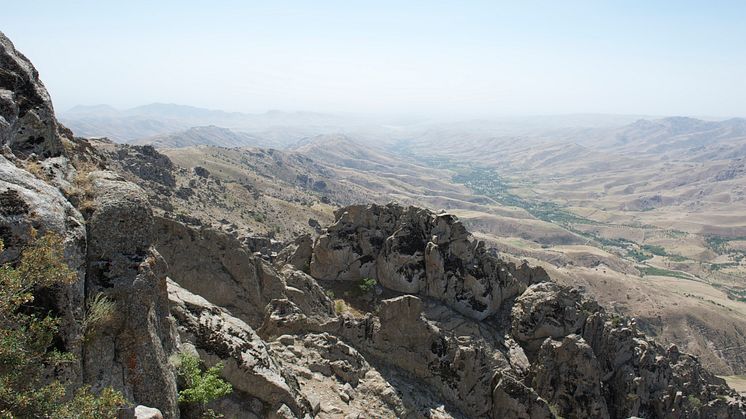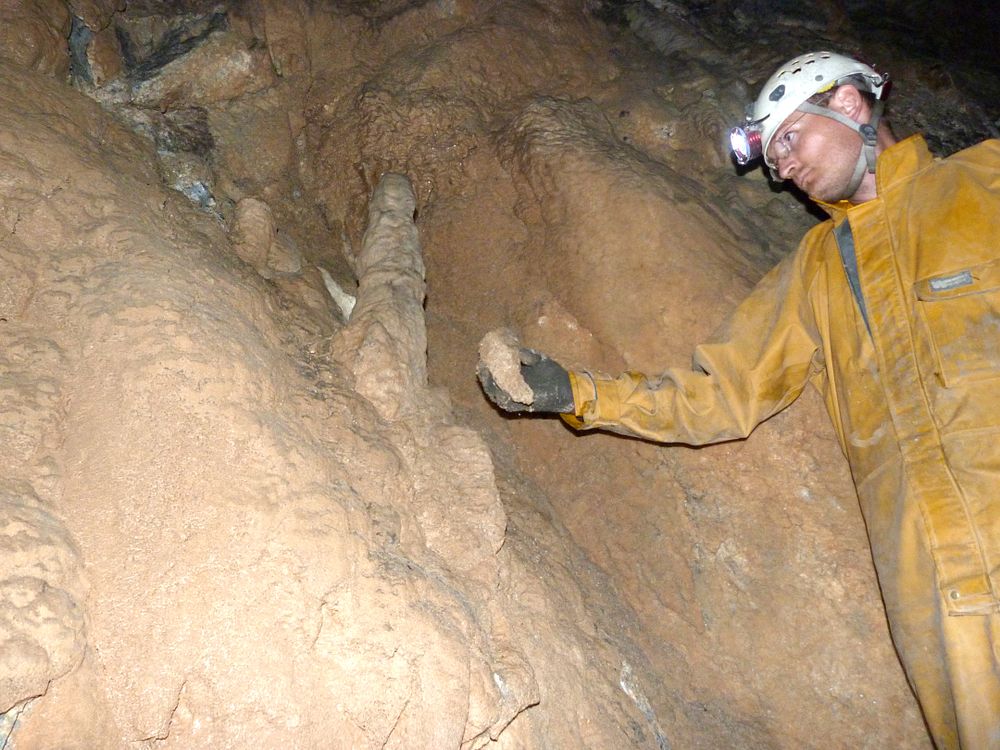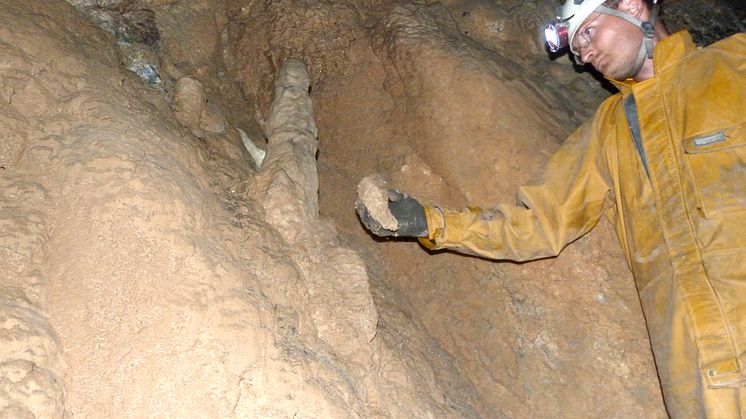
Press release -
Central Asia identified as a key region for human ancestors
The interior of Central Asia has been identified as a key route for some of the earliest hominin migrations across Asia in a new study published in PLOS ONE.
An interdisciplinary team of scholars from institutions spanning four continents, including Northumbria University, set out to expand the limited knowledge of early hominin activity in the Central Asian lowlands.
The team compiled and analysed paleoclimatic and archaeological data from the region during the Pleistocene era, often referred to as the Ice Age, which began around 2.6 million years ago and ended 11,700 years ago.
This analysis included the examination of a new stalagmite from a cave in Southern Uzbekistan that grew during a warm period around 400,000 years ago and Paleolithic stone tools found in the region.
Toolmaking and tool modification were key to human ability to migrate to new environments and to overcome environmental challenges, and the ancient hominins moved their tools with them as they dispersed.
By combining the high-resolution climate information recorded in the stalagmite with the dataset of Paleolithic tools, the researchers believe that during periodic warmer and wetter intervals, the local environment of arid Central Asia was frequented by Lower Paleolithic toolmakers and could have been a more favourable environment for hominins and their dispersal into Eurasia.
“Cave deposits like stalagmites are incredible archives of environmental conditions at the time of their growth,” said Professor Sebastian Breitenbach, of Northumbria University’s Department of Geography and Environmental Sciences, who led the stalagmite-based analysis.
“Using geochemical data from stalagmites we gain insights into seasonal to millennial-scale changes in moisture availability and the climatic dynamics that governed rain- and snowfall.
“Our work suggests that the local and regional conditions did not follow simple long-term trends but were quite variable. This means that ancient humans would have been kept on their toes to adapt to an ever-changing environment.”

Dr Emma Finestone, Assistant Curator of Human Origins at the Cleveland Museum of Natural History, led the study.
She explained: “Central Asia connects several zones that played important roles in hominin dispersals out of Africa and through Asia, yet we know comparatively little about the early occupation of Central Asia.
“Interdisciplinary work that bridges archaeology with paleoclimate models are becoming increasingly necessary for understanding human origins. In the future, the databases generated in this study will continue to allow us to ask questions about the context of hominin dispersals.”
The study included researchers from Kings College London, Griffith University in Australia and the Uzbekistan Academy of the Sciences.
The paper Paleolithic occupation of arid Central Asia in the Middle Pleistocene has been published in PLOS ONE.
Professor Breitenbach is a member of Northumbria University’s Cold and Palaeo Environments research group which works to investigate modern and ancient environments, reconstructing climate data over millions of years.
Northumbria was recently ranked second in the UK for research power in Geography and Environmental Studies, with over 90% of research outputs rated as world-leading or internationally excellent in the 2021 Research Excellence Framework.
Topics
Categories
Northumbria is a research-intensive modern university with a global reputation for academic excellence. Find out more about us at www.northumbria.ac.uk --- Please contact our Media and Communications team at media.communications@northumbria.ac.uk with any media enquiries or interview requests ---








